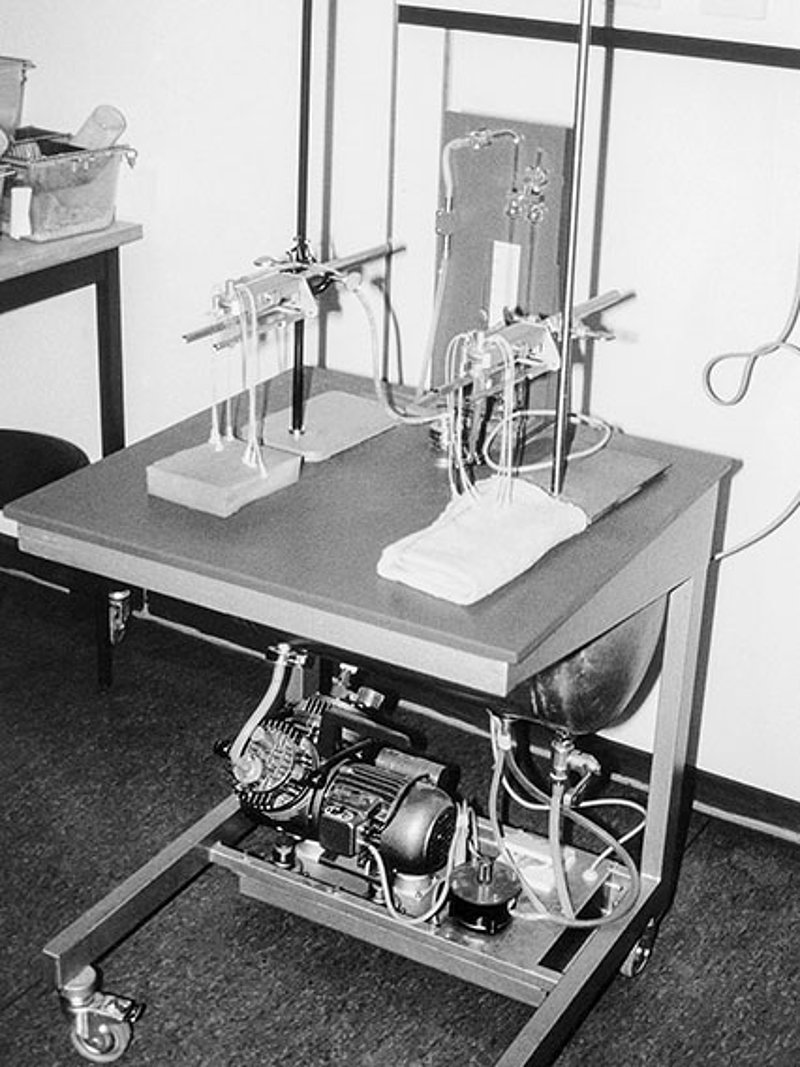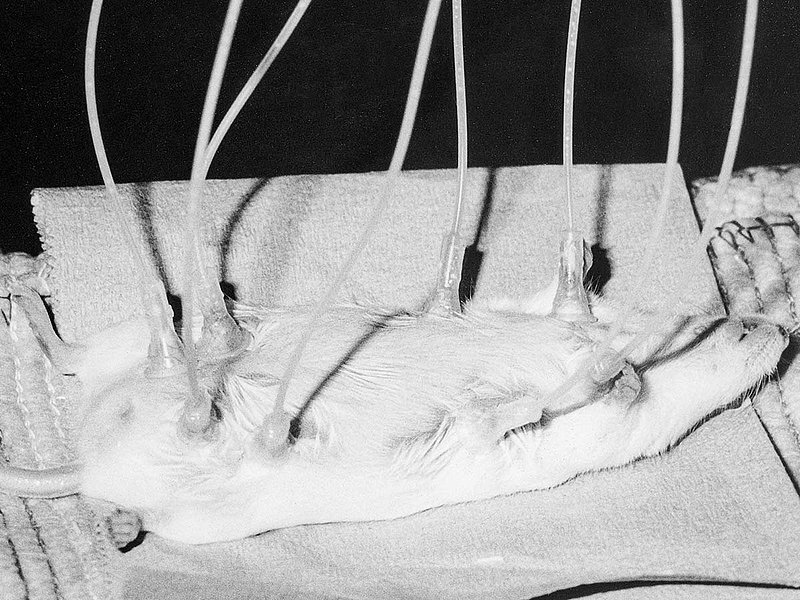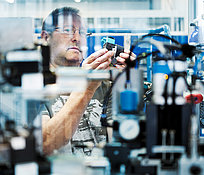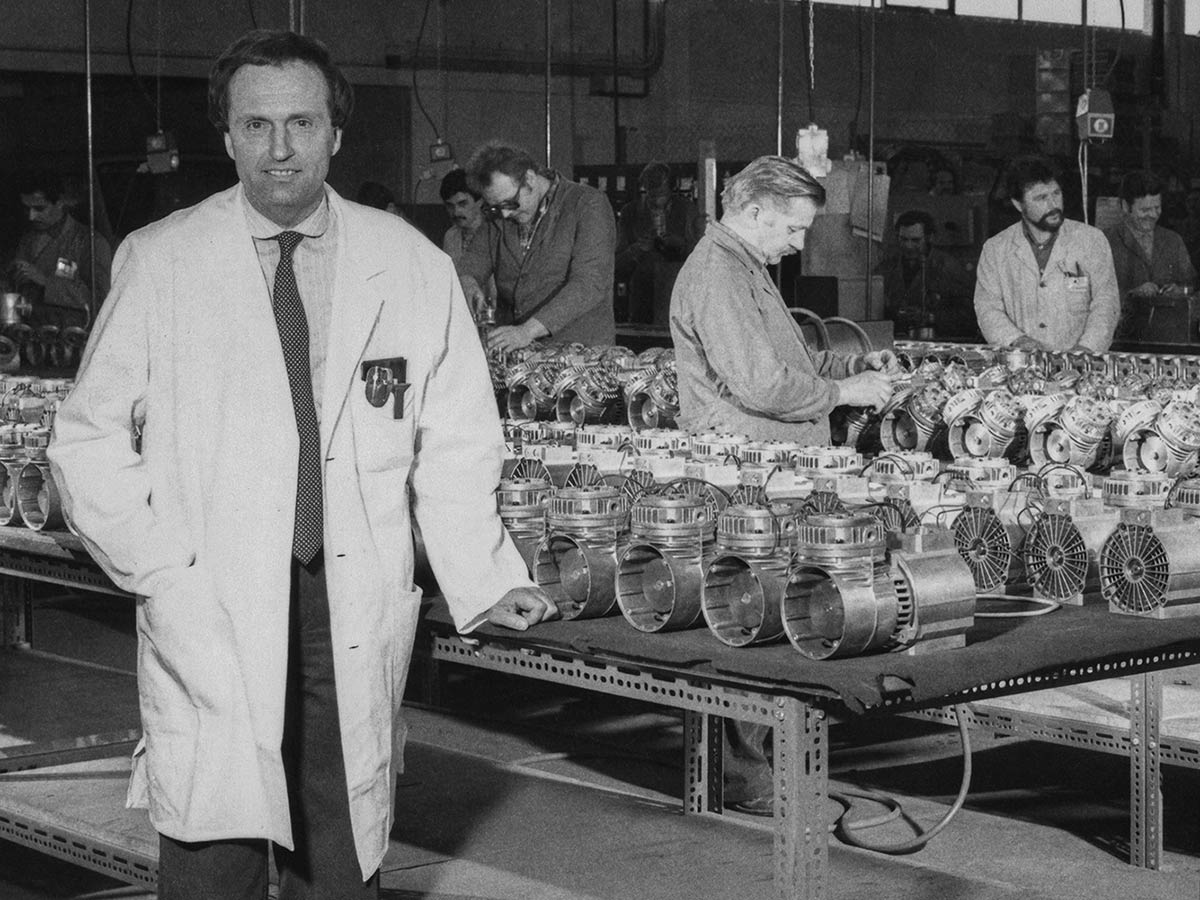
Milking Mice
In German, there is a colloquial expression that literally translates as “It’s as frustrating as milking a mouse!” While nobody is quite sure of where this phrase originates from, it is commonly used by German speakers when they feel exasperated by something virtually impossible. Like threading an electrical cord through the eye of a needle. Or solving mathematical equations with a child screaming in the background. Or indeed designing a mouse-milking machine. In the early 1980s, this is exactly what a research team at Ulm University sets out to do. And KNF can confirm that this is not a joke, as one of the company’s N 035.1.2 diaphragm gas pumps is fitted into the very same machine.
As you would imagine, the mouse-milking machine is, as a matter of fact, very tricky to design. Manufacturing the silicone teat cups using tiny molds is, well, as frustrating as milking a mouse! Conversely, the pump, which has to ensure that the suction process is as gentle and noiseless as possible, works perfectly from the outset. KNF’s model meets all of the project’s requirements by being 100 % oil-free, quiet and maintenance-free. The pump generates a weak negative pressure of 800 to 850 mbar, allowing 5 ml of mouse milk to be obtained from several animals in 5 hours. The mice are anesthetized to ensure that they do not feel any pain.

The milking machine gets developed for a research project in the field of transfusion medicine which hits the headlines in the early 1980s. The researchers from Ulm University are investigating natural defense mechanisms against bacterial infections. Their work is focused on researching the mechanism of action of the protein lactoferrin, which inhibits the growth of bacteria by binding iron. This is where the milking machine comes in.

Nobody anticipates the press coverage that this machine goes on to receive. The story of how Ulm University milks mice attracts media attention for years to come. In 1995, engineer Herbert Schmitt, who is responsible for designing the mouse-milking machine, even appears on the German TV quiz show “Ja oder Nein” (“Yes or No”) with Blacky Fuchsberger, where four celebrities have to guess the guests’ secrets. It goes without saying that no one is able to guess his.
Although the mouse-milking machine has long since left the premises and the project has been shelved, it is still a popular anecdote to tell at Ulm University. For KNF, the milking machine is a strange little tale in a long list of diverse client orders, which nevertheless shows that truly anything is possible.
KNF Blog Knowledge Flows
Follow the latest trends and stories on how diaphragm pump technology drives evolution in the market.




